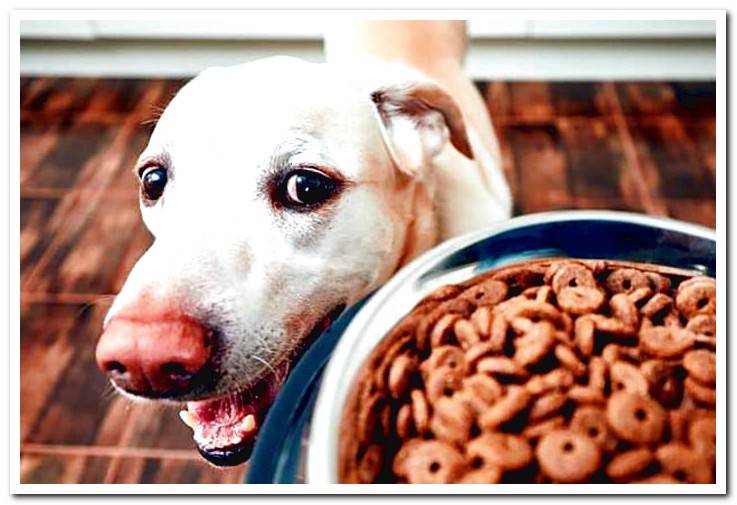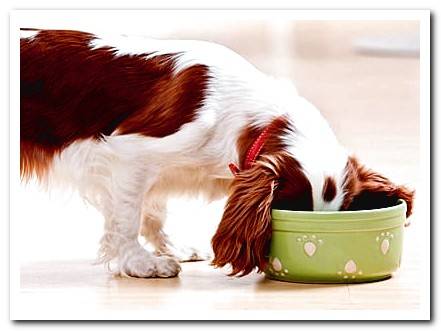
Keeping our dog at his ideal weight is an essential factor to avoid health problems. If we overfeed our pet, it will gain weight and be predisposed to suffer joint disorders, diabetes or other pathologies.
Therefore, it is important that we control the amount of feed that you should eat each day. But, how to know the ration that we should give him? Let’s dig into the world of dog nutrition to find out how much our dog should eat.
Index of contents
- 1 What defines proper nutrition?
- 2 What nutrients does a dog need?
- 3 How much nutrients does a dog need?
- 4 How much energy does a resting dog need?
- 5 How much energy does a dog need for its daily activity?
- 6 How much energy does each food contain?
- 7 How much food should a dog eat?
- 8 How to know if our dog is eating the right amount?
- 9 Recommended daily food amount for a puppy
- 10 Recommended daily food amount for an adult dog
What defines proper nutrition?
A correct nutrition is one that provides the dog with all the nutrients it needs in adequate quantity and enough energy to maintain its bodily functions (digestion, breathing, etc.) and carry out its daily activities.
What nutrients does a dog need?
There are 5 types of nutrients that are necessary for the proper functioning of a dog’s body:
- Protein
- Carbohydrates or sugars
- Lipids or fats
- Vitamins
- Minerals
Water is essential for life, however, it is not included within the nutrients.
How much nutrients does a dog need?
A dog must consume a minimum amount of each of these nutrients daily so that its nutritional needs are met. This quantity is what is known as IDR (Recommended Daily Intake).
RDI is the nutrient intake level that appears to be adequate to meet the nutritional needs of virtually all healthy dogs.
Pet food manufacturers formulate feed in such a way that, by eating the ration stated on the packaging, the RDI of all nutrients is ensured.
Feed that is labeled “complete dog food”, cover all the nutritional needs of the animal for which they are intended. So it is not necessary to supplement them with any complement.
In addition, the labeling of the feed must specify the type of dog for which it is intended, especially the age. There are food for puppies, for adults and for senior dogs, and their composition is different since the nutritional needs vary at each stage of life.

How much energy does a resting dog need?
The energy or calories a dog needs to perform its basic bodily functions, is known as GER (Energy expenditure at Rest). This would be the energy you spend to be at rest.
The resting energy expenditure can be determined with a mathematical formula knowing the weight of the animal:
GER = 30 x Body Weight (Kg) + 70
How much energy does a dog need for its daily activity?
Dogs are not always at rest, and require energy to perform other activities such as walking, playing, running … The amount of energy required to cover the total activity of the pet is known as REM (Maintenance Energy Requirement).
REM varies by age, the activity level and the physiological state of the animal (if it is pregnant, castrated, sick …).
There are formulas that allow calculating the average needs of each type of dog, but we must remember that the individual requirements of an animal can vary significantly from the general estimates.
- Puppy up to 4 months: REM = 3 x GER
- Puppy from 4 months to adult: REM = 2 x GER
- Non-sterilized adult: REM = 1.8 x GER
- Sterilized adult: RER = 1.6 x GER
- Active dogs: REM = 2-5 x GER
- Inactive dogs: REM = 1.2-1.4 x GER
How much energy does each food contain?
Nutrients that provide energy are fats, sugars and proteins:
- 1 gram of fat contributes 9 kilocalories
- 1 gram of carbohydrates contributes 4 kilocalories
- 1 gram of protein provides 4 kilocalories
Knowing the proportion in which each nutrient is in the food and applying these data of caloric content per nutrient, you can estimate the energy contained in a feed per 100 grams.
Knowing the energy content of food and the amount of energy a dog needs, you can determine the amount of feed it should eat.

How much food should a dog eat?
Feed manufacturers carry out even more complex calculations and carry out a series of animal feeding tests to determine more precisely the ration that ensures adequate nutrition.
For this reason, it is recommended to follow the manufacturer’s instructions to set the amount that our dog should eat.
However, we have mentioned that there are individual variations, so It may be necessary to make small adjustments to this recommended portion. depending on the characteristics of each specific dog.
How to know if our dog is eating the right amount?
The best way to know if our dog is receiving the amount of energy it needs is to assess its body condition and control its weight.
If we overfeed our dog, that is, we give him more energy than he needs, that excess energy will transform into fat and put on weight.
If we don’t give him enough feed, will use your fat stores to get the energy you need and the dog will lose weig
ht.
When a dog receives an energy level appropriate to its needs, it will maintain its optimal weight.
Who can best confirm what is the ideal weight of our dog is the veterinaryn, so if you see changes in the weight of your pet you should go to his consultation to verify if there is any adjustment to your ration.
Recommended daily food amount for a puppy
Puppy feed contains much more nutrients than adult dog feed, since they are in full development and it is absolutely necessary to cover all their nutritional demands so that they grow without deficiencies.
Generally we can find the daily amount of food for a puppy in the manufacturer’s container, classified as “Puppy” or “Junior”. But if you have doubts or it is not indicated, you can be guided by these amounts and increase them if your puppy loses weight or decrease them if he gets too fat.
- Puppies up to four months: 2.5% of your body weight
- Puppies over four months: 1.8% of your body weight
Recommended daily food amount for an adult dog
With adult dogs we must be more precise even if it fits, since depending on their habits we must use a high energy feed or a maintenance feed. In this way, we can cover your caloric expenditure without losing or gaining weight.
In the packaging of each manufacturer we will find the recommended quantities, however, we can get an idea by following these instructions:
- Adult dogs with normal activity: 1.6% of your body weight
- Adult dogs with reduced activity: 1.4% of your body weight
Remember that you must divide their daily ration into several feedings, to prevent their stomach from overworking with a large intake of food.In addition, working dogs will need a specific high-energy diet. While the older ones, they will require a “senior” or “low calorie” diet.
